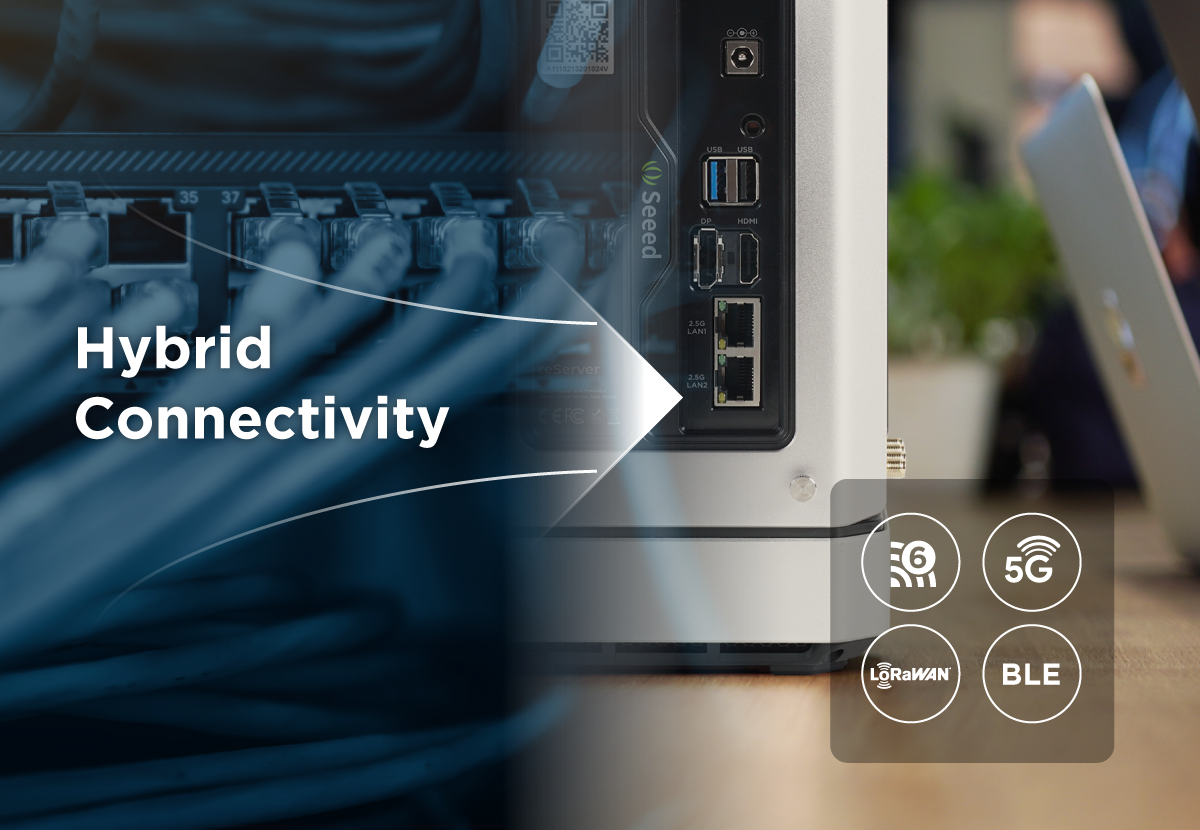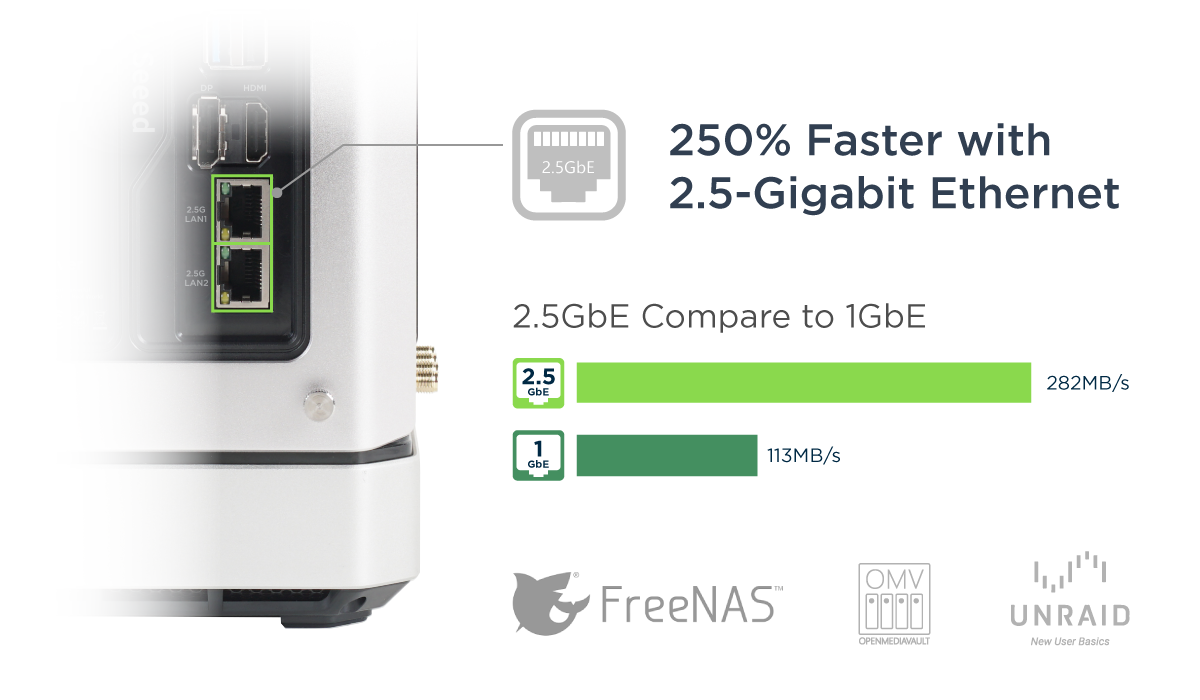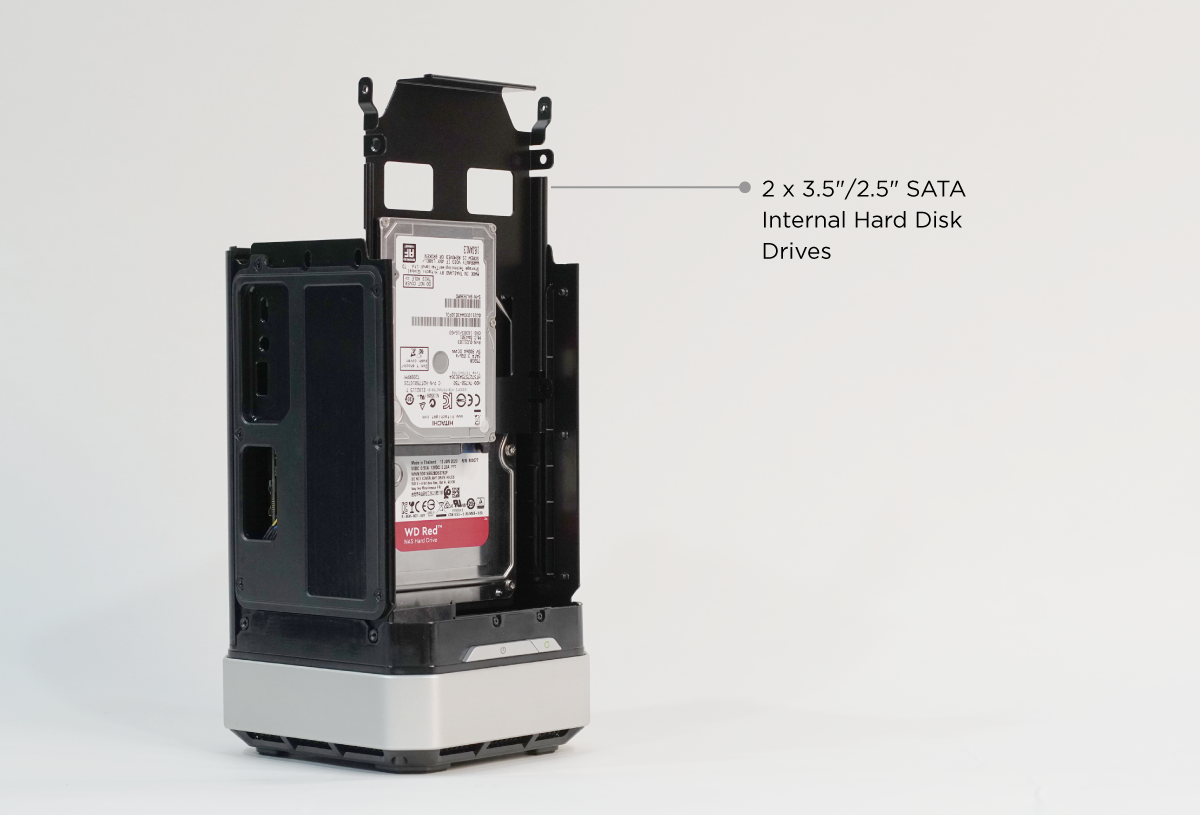
Seeed Studio is well known for its developments, among which stand out single-board. Recently, her team presented an unusual project - a compact edge server and network attached storage (NAS).
The development is based on the Intel Tiger Lake processor. There are several configurations, the most productive includes the Core i7-1185GRE with four cores (eight instruction streams) and Intel Iris Xe graphics accelerator. The base frequency is 1.8 GHz, the maximum possible is 4.4 GHz.

The case dimensions are 124 x 132 x 230 mm, which makes it possible to fit two 3.5-inch SATA drives inside. There is also enough space inside for a powerful cooling system - you can use a factory one, or you can use a custom one.
The developers suggest using reServer as a universal network device. It can be useful for small offices, serve as a server in small companies. Also, the device can be used in robotics, healthcare, smart agricultural systems, etc.
One use for ordinary users is a 24/7 home media server + NAS. The device is compatible with software such as FreeNAS, OpenMediaVault and Unraid.

Characteristics
- : Intel Core i3-1115G4 48 EU Intel UHD @ 400 – 1250MHz; 28W TDP, Intel Core i5 80 EU Intel Iris Xe Graphics G7 @ 400-1300MHz; 28W TDP, Intel Core i7 96 EU Intel Iris Xe Graphics G7 @ 400-1300MHz; 28W TDP.
- : Microchip ATSAMD21G18 32-Bit Arm Cortex-M0+
- : 64 DDR4-3200 SDRAM ( )
- : 2x SATA III 6.0 Gb/s 2,5- 3,5- , M.2 NVMe.
- : 1x HDMI 2.0b, 1x DP1.4a, 1x DisplayPort USB-C USB 4.0/Thunderbolt 4 ( Core i7), 40-pin 4-lane eDP SBC, 2 (Core i3/i5) 3 (Core i7) NAS-.
- : Realtek High Definition Audio, + , 3-pin 2.54mm S/PDIF header.
- Network: 2x 2.5GbE RJ45 ports Intel i225, Intel WiFi 6 AX201 M.2 E module for Wi-FI 6 and Bluetooth 5.0, optional M.2 sockets wireless module for 4G / 5G, LoRaWAN, etc. slot for Micro SIM card, 4 x SMA connectors for antennas.
- USB: Core i3 / i5 models - 1x USB 2.0 port, 1x USB 3.0 port; Core i7 model - 2x USB2.0 ports, 1x USB 4.0 / Thunderbolt 4 Type-C port, built-in 9-pin header with 2x USB 2.0.
- Serial - 1x RS-232/422/485, 1x RS-232.
- Additionally: LEDs Power Status, SATA status, 2 x 12V coolers, RTC battery with 3V / 210mAh backup battery.
- Power supply: 12V 5.5 × 2.5mm DC jack for all models, plus 12-19V USB PD for Core i7.
- Dimensions: 230 (H) x 124 (W) x 132 (D) mm.
- Weight: 1.8 kg.
- Certification: CE, FCC, KC, TELEC.
Inside the case there is also an RS-232/422/485 port, a 28-pin Arduino coprocessor header, and a cooler header.

The system is equipped with two high-speed 2.5 Gigabit Ethernet ports and supports hybrid connectivity including 5G, LoRaWAN, BLE and Wi-Fi. This connection is up to 250% more efficient than Gigabit Ethernet with compatible hardware and delivers speeds up to 5 Gbps using link aggregation.

Higher performance models also have Thunderbolt 4 ports, plus PCIe 4.0 x4 is supported. Basic performance models such as Core i3 lack Thunderbolt. Instead, they are equipped with PCIe 3.0 x4.

Core i3 models can be powered by a regular 12V power supply. Older models can be connected in a similar way, but there is an alternative for them - a USB-C port.
Due to its small size (about 1/15 of a typical desktop PC case), the device can be placed anywhere, including a table, shelf, floor, etc.
As for the price, it starts at $ 649 for the i3 model. How much the older models cost is still unknown.
